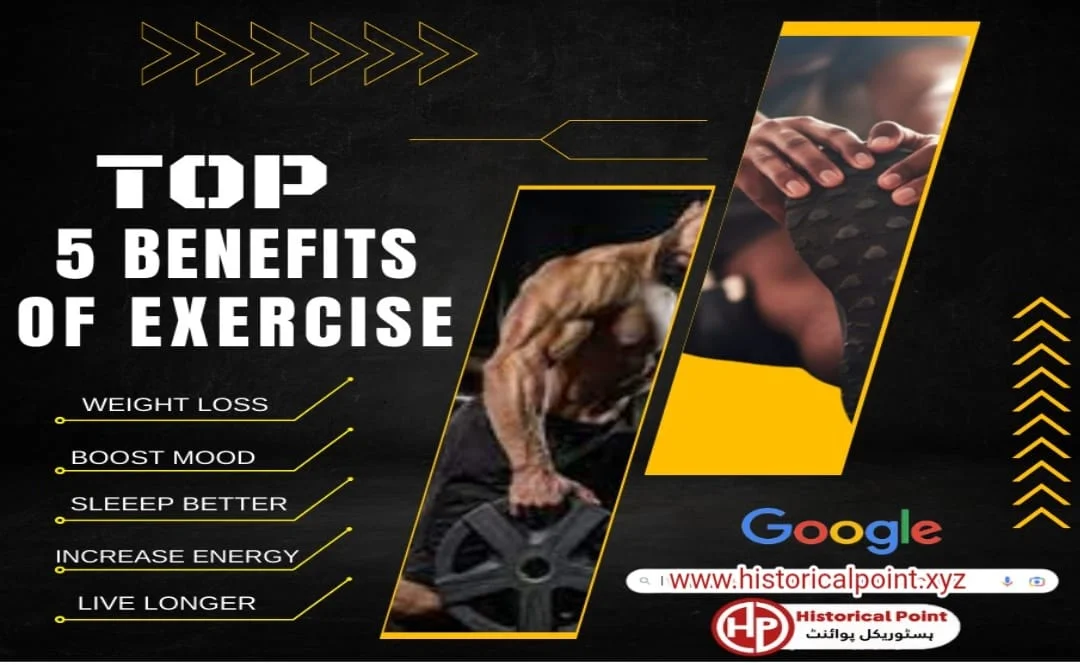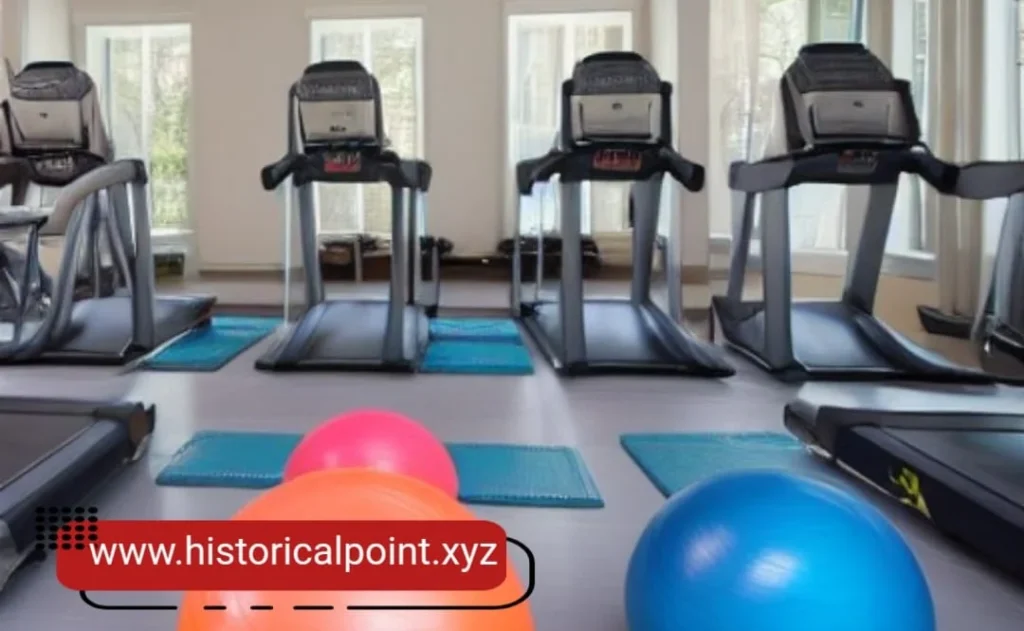
Benefits of Exercise
Benefits of Exercise extend far beyond weight management, touching every aspect of our lives, from mental well-being to longevity. In this blog, we’ll explore the myriad benefits of exercise, offering insights into why making it a regular part of your routine can be one of the best decisions for your health.
Table of Contents
- Introduction
- Physical Health Benefits
- A. Weight Management
- B. Cardiovascular Health
- C. Bone and Muscle Health
- D. Improved Immune Function
- E. Enhanced Longevity
- Mental Health Benefits
- A. Stress Reduction
- B. Enhanced Cognitive Function
- C. Better Sleep
- D. Boosted Self-Esteem
- Social Benefits
- A. Building Relationships
- B. Strengthening Family Bonds
- C. Enhancing Teamwork and Collaboration
- Long-Term Benefits
- A. Prevention of Chronic Diseases
- B. Healthy Aging
- C. Improved Quality of Life
- Conclusion
1. Introduction
Exercise is often viewed as a key component of a healthy lifestyle. It not only helps in physical fitness but also enhances mental well-being, social connections, and long-term health. Understanding the broad spectrum of benefits can motivate individuals to integrate regular physical activity into their daily lives. This blog explores these benefits in detail, highlighting why exercise should be a non-negotiable part of your routine.
Why Physical Activity is Essential for a Healthy Life?
2. Physical Health Benefits
A. Weight Management
Exercise plays a crucial role in maintaining a healthy weight. By increasing calorie expenditure, it helps balance the calories consumed from food, which is essential for weight loss or maintenance. Moreover, regular physical activity boosts metabolism and preserves lean muscle mass, ensuring that the weight lost is primarily fat, not muscle. This contributes to a healthier body composition and improved overall fitness.
| Exercise Type | Calories Burned (per hour) |
|---|---|
| Running (6 mph) | 600-800 |
| Cycling (12-14 mph) | 500-700 |
| Swimming | 400-600 |
| Walking (3.5 mph) | 250-350 |
B. Cardiovascular Health
Regular exercise is highly beneficial for heart health. It strengthens the heart muscle, improves blood circulation, and enhances the efficiency of the cardiovascular system.
Engaging in aerobic activities like running, swimming, or cycling can lower blood pressure, reduce bad cholesterol (LDL), and increase good cholesterol (HDL). These effects collectively reduce the risk of heart disease, stroke, and other cardiovascular conditions, promoting a healthier and longer life.
C. Bone and Muscle Health
Exercise is essential for maintaining strong bones and muscles. Weight-bearing exercises, such as resistance training or walking, increase bone density, reducing the risk of osteoporosis.
Regular physical activity also helps preserve muscle mass and strength, which is critical for mobility, balance, and overall physical function, especially as you age. By preventing conditions like sarcopenia, exercise supports a more active and independent lifestyle in later years.
D. Improved Immune Function
Moderate exercise has been shown to enhance immune function, making the body more resilient to infections like the common cold or flu. Physical activity improves the circulation of immune cells, enabling the body to detect and respond to pathogens more effectively.
However, it’s important to note that excessive exercise without adequate rest can have the opposite effect, temporarily weakening the immune system. Thus, a balanced approach to exercise is key to maintaining optimal health.
E. Enhanced Longevity
Engaging in regular physical activity is linked to a longer lifespan. Exercise reduces the risk of developing chronic diseases such as heart disease, diabetes, and certain cancers, which are leading causes of death globally. Furthermore, active individuals tend to maintain better physical and cognitive function as they age, contributing to a higher quality of life. This makes exercise a powerful tool not only for living longer but also for living better.
3. Mental Health Benefits
A. Stress Reduction
Exercise is one of the most effective natural stress relievers. Physical activity stimulates the production of endorphins, the body’s natural mood elevators, which help to reduce stress and promote relaxation. Additionally, regular exercise lowers the levels of stress hormones like cortisol. Activities such as yoga, tai chi, or even a brisk walk can significantly alleviate feelings of anxiety and tension, providing a calming effect that improves overall well-being.

B. Enhanced Cognitive Function
Exercise has significant benefits for brain health. Regular physical activity increases blood flow to the brain, delivering more oxygen and nutrients that support cognitive function. Exercise also promotes the growth of new neurons, particularly in the hippocampus, which is involved in memory and learning. This helps protect against age-related cognitive decline and reduces the risk of neurodegenerative diseases such as Alzheimer’s and Parkinson’s.
| Cognitive Benefits of Exercise | Key Outcomes |
|---|---|
| Increased blood flow to the brain | Improved memory and cognitive function |
| Neurogenesis in the hippocampus | Enhanced learning and memory retention |
| Reduced risk of cognitive decline | Lower risk of Alzheimer’s and Parkinson’s |
C. Better Sleep
Exercise can significantly improve sleep quality. Physical activity helps regulate the sleep-wake cycle, making it easier to fall asleep and stay asleep. It also increases the amount of time spent in deep sleep, the most restorative phase of sleep, which is crucial for physical and mental recovery. For best results, it’s recommended to avoid vigorous exercise close to bedtime, as it may increase alertness and make it harder to fall asleep.
D. Boosted Self-Esteem
Achieving fitness goals through regular exercise can greatly enhance self-esteem. Whether it’s running a mile, lifting heavier weights, or simply sticking to a routine, these accomplishments boost confidence and foster a positive self-image. Additionally, physical changes such as weight loss, muscle toning, and improved posture can lead to a better body image, contributing to overall emotional well-being and a more positive outlook on life.
4. Social Benefits
A. Building Relationships
Exercise often involves social interaction, whether through group fitness classes, team sports, or simply walking with a friend. These activities provide opportunities to meet new people and strengthen existing relationships. Social connections are vital for mental health, offering support, motivation, and a sense of community. By engaging in physical activities with others, you can build meaningful relationships that contribute to overall happiness and life satisfaction.
B. Strengthening Family Bonds
Exercise is a great way to bond with family members. Participating in physical activities together, such as hiking, biking, or playing sports, allows families to spend quality time and create lasting memories. These shared experiences not only promote health but also strengthen relationships. Additionally, parents who exercise set a positive example for their children, encouraging them to adopt a healthy lifestyle that they can carry into adulthood.
C. Enhancing Teamwork and Collaboration
Participating in team sports or group fitness activities can improve teamwork and collaboration skills. Working together towards a common goal, whether it’s winning a game or completing a group workout, fosters communication, cooperation, and a sense of camaraderie. These experiences build trust and understanding among team members, skills that are valuable in many aspects of life, including work, school, and personal relationships.
5. Long-Term Benefits
A. Prevention of Chronic Diseases
One of the most significant long-term benefits of exercise is the prevention of chronic diseases. Regular physical activity has been shown to lower the risk of conditions such as heart disease, type 2 diabetes, and certain cancers. Exercise helps manage key risk factors, including high blood pressure, high cholesterol, and insulin resistance. By maintaining a consistent exercise routine, you can significantly reduce your risk of developing these life-threatening conditions.
| Chronic Disease | Risk Reduction with Exercise |
|---|---|
| Heart Disease | 30-40% reduction |
| Type 2 Diabetes | 30-50% reduction |
| Certain Cancers (e.g., colon, breast) | 20-30% reduction |
B. Healthy Aging
Exercise is crucial for healthy aging, helping to maintain physical and cognitive function. Regular physical activity supports muscle mass, bone density, and joint flexibility, all of which are important for mobility and independence in older adults. Exercise also helps prevent age-related conditions such as osteoporosis and cognitive decline, allowing individuals to enjoy a higher quality of life as they age. By staying active, older adults can remain independent and engaged in their communities for longer.
C. Improved Quality of Life
Ultimately, the benefits of exercise contribute to an improved quality of life. Regular physical activity enhances both physical and mental well-being, leading to a healthier, happier, and more fulfilling life. Exercise also provides a sense of purpose and achievement, contributing to overall life satisfaction. By incorporating regular exercise into your routine, you can enjoy a more vibrant and active lifestyle, with greater energy, resilience, and joy.
6. Conclusion
By understanding these benefits, you can be more motivated to make physical activity a regular part of your life. Whether you’re looking to prevent chronic diseases, improve your mood, or simply enjoy life more fully, exercise is a powerful tool that can help you achieve your goals. So, lace up your sneakers and start moving—your body and mind will thank you!
Explore More at Historical Point Website’s
To delve deeper into the lives and legacies of historical figures like Usman Ghazi, Ertugrul Ghazi, Salahuddin Ayubi, Sultan Muhammad Fateh and many more, visit Historical Point website for a wealth of insightful articles and comprehensive analyses.
| www.historicalpoint.xyz |



